-------------------------------------Go to Japanese Page
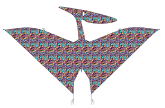 VTR1(4.9MB MPEG)
VTR1(4.9MB MPEG)| width | 46.0 | cm |
| length | 30.0 | cm |
| weight | 11.5 | g |
| battery LiPo 70mAh | 1.9 | g |
| Tatal flight weight | 13.4 | g |
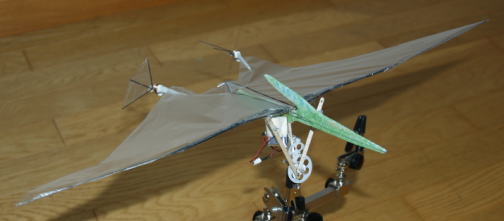
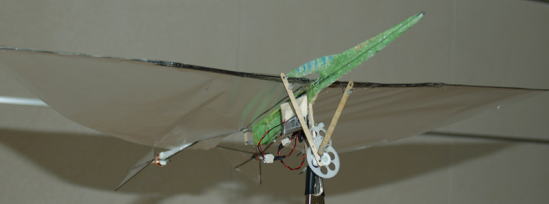
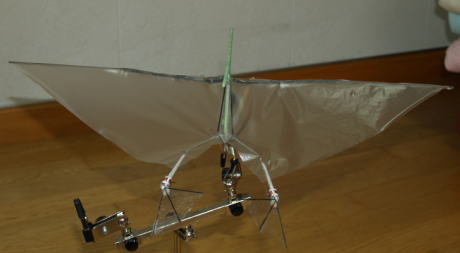

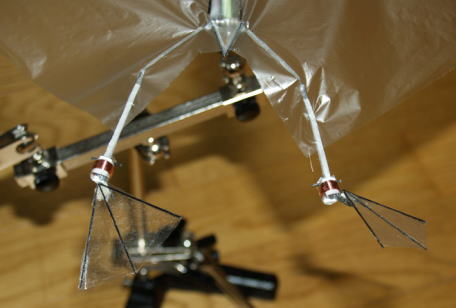
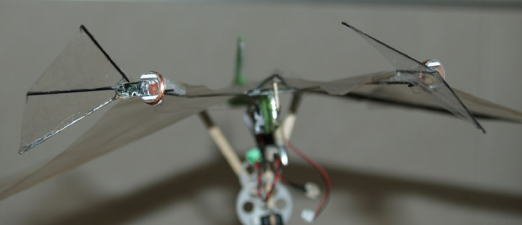
Infrared rays receiver: Irxa3013 which has NDC7001CX FETdriver built-in
Infrared rays-receiving element: NJL21V380A (38.0kHz)
Motor: DIDEL coreless motor 6x12mm 4.5 Ω MK06-4.5
Gear: 60/12 spur DIDEL module 0.3 G360L,, 81/12spur DIDEL module 0.3 G3810L, 9 pinion DIDEL module 0.3 G309-081
Actuator: 50 Ω magnet wire 0.05mm(AWG44) *2, powerful magnet φ 3.0mmx2.0mm N50 *2
Battery: Li-Po battery 70mAh
Film of a wing: 10 micron film (polyethylene bag thickness 0.01mm for cooking)
Fuselage material: balsa, foaming polyethylene, carbon, aluminum board, superglue
Control: 3 channel (a motor, the right ruddavator, the left ruddavator)
I tested whether control of right and left was not possible in form to be near to the flight system of true Pterosauria.
In this fuselage, I added membrane between fingers of feet and did it with the reverse V tail assembly (controled by computer mixing). When it moves by an actuator up and down, a moving plane section has fallen by gravity below. So, I did an axis of an actuator vertically and moved from side to side.
Then I can keep neutrality in this way even if I do not use a magnet or rubber.
Around 45 degrees inclined a moving plane section for an axis of an actuator and glued it together.
Motion of Yaw axis and Pitch axis was able to control.
When a fuselage turns from side to side(yaw), a foot of right and left is bent to the same direction.
Both legs are opened outward to rise a fuselage and are closed inward to drop a fuselage.
The form almost became a pteranodon except that a foot is too big, but the flight system is different from real pteranodons. And this smaller ornithopter fly like a mosquito or a bat